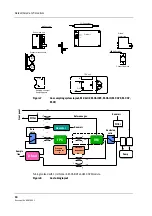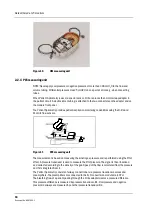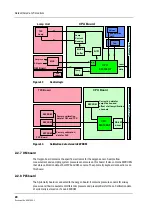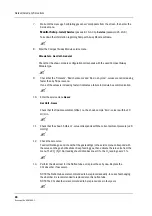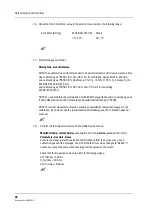
Compact Airway modules
Document No. 800 1009-1
13
i
CO
e
CO
=
2
MV
fi
-
MV
fe
VCO
2
2
×
×
[ml/min]
Formula 8
To obtain results which are less sensitive to errors in volume measurements, so-called
Haldane
transformation
is used. This means taking advantage of the fact that the patient is not consuming
nor producing nitrogen: the amount of nitrogen inhaled is equal to the amount
exhaled fi
N2
×
MV
i
=fe
N2
×
MV
e
.
VO
2
and VCO
2
can then be written as:
i
O
Hald
O
2
)MV
fe
f
-
(fi
=
VO
2
2
×
[ml/min]
Formula 9
i
CO
CO
Hald
2
)MV
fi
-
fe
(f
=
VCO
2
2
×
[ml/min]
Formula 10
with
f
Hald
= (1-fi
CO2
– fi
O2
– fi
N2O
- fi
Ane1
– fi
Ane2
) / (1-fe
CO2
– fe
O2
– fe
N2O
- fe
Ane1
– fe
Ane2
)
EE=(5.5
×
VCO
2
) + (1.76
×
VO
2
) + (1.99
×
Un) [kcal/day]
Formula 11
with Un=Urea Nitrogen Excretion = 13 g/day (for adults only).
2.2
Main components
The compact airway modules consist of:
•
Gas sampling system
•
TPX measuring unit
•
OM measuring unit
•
PVX measuring unit
•
CPU board
•
OM board
•
PVX board
2.2.1
Gas sampling system
The sampling system takes care of drawing a gas sample to the analyzers at a fixed rate.
The gas sampling system samples the measured air to the module, and removes water and
impurities from it. A sampling line is connected to the water trap. The pump draws gas through the
sampling line to gas measuring units. After the measurements, the gas is exhausted from sample
gas out connector.
The M-COVX and M-CAiOVX modules have a different gas sampling system compared to the other
modules. A number of flow restrictors have been changed to create a bigger pressure difference
with ambient pressure in the gas sensors. The sample flow is however about the same (200
ml/min).
A bigger pressure difference makes the deformations of the gas concentration curves less sensitive
to high variations of the airway pressures thus meeting also the accuracy requirements of gas
exchange for these applications.


















